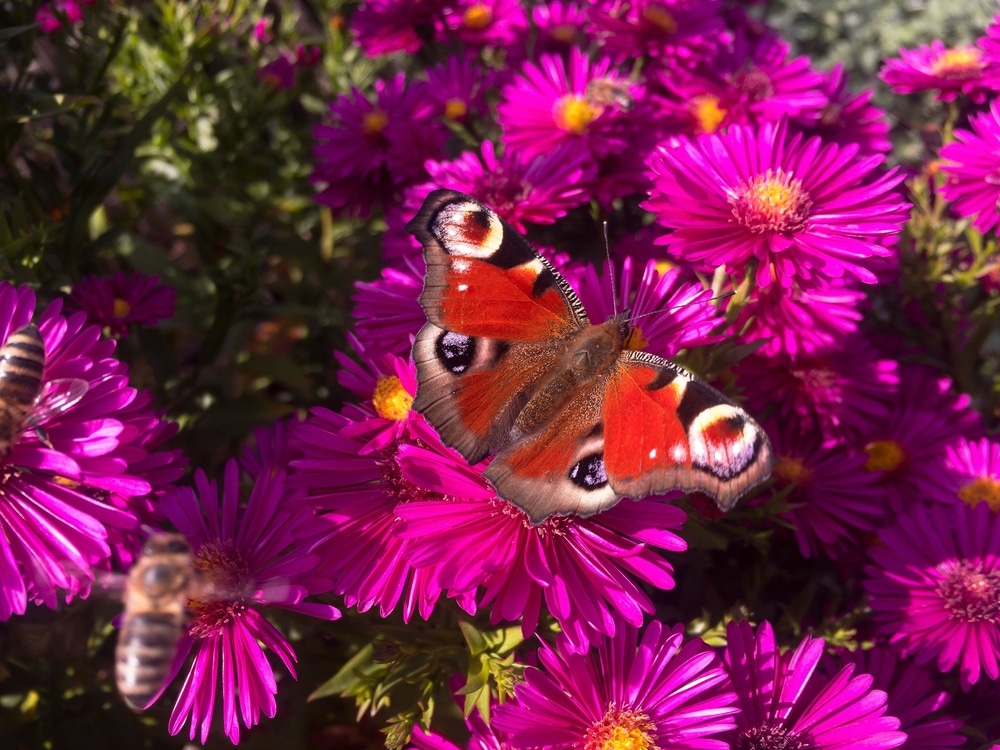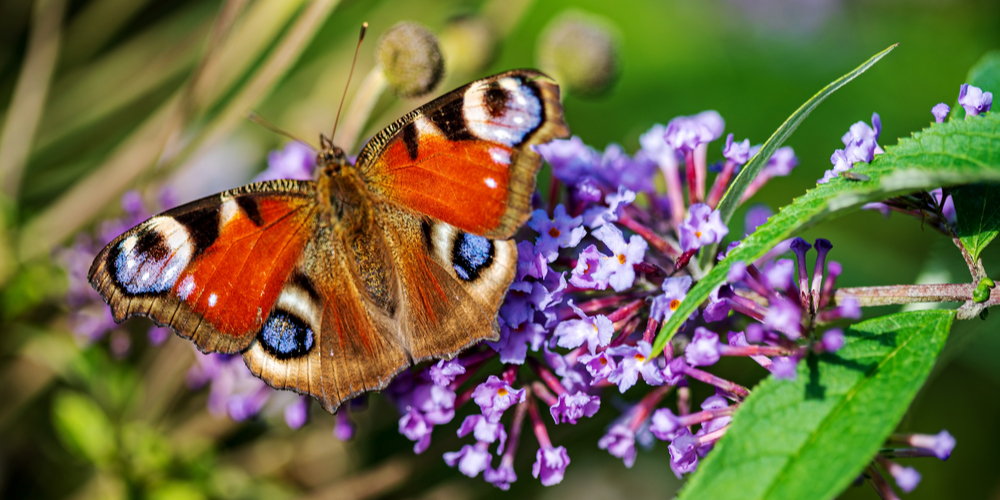You’re looking to curate a certain flavor of pollinator in your garden and struggling to get the right mix. Maybe the butterfly population in your area has been in dire straits. Or you’ve got a deathly bee allergy in your home. Whatever the case, you’re trying to make sure you’re planting flowers that attract butterflies but not bees.
However, that’s no easy task. Both butterflies and bees are large groups of insects that cover a wide array of pollinating preferences, so it can be hard to know off the bat what either prefers. Let’s try to break down the differences in their pollination habits, and then get into some examples of flowers that attract butterflies but not bees.
What Kind of Flowers Do Bees Like?
The life cycle and social structure of bee life greatly influence their pollination practices. Bees eat honey, which is made from pollen collected from flowers and other plants.
That honey, created by the pollen collected by worker bees, is then stored and shared across the bee colony. This means that bees can collect lots of pollen at once, then wait out long periods without ready access to pollen, such as in the wintertime. It also allows adult bees to feed the baby bees.
Unfortunately, because bees need pollen before winter, there’s not much you can do to dissuade them from your garden. There are over 4,000 species of bees that love all sorts of flowers. They especially love annual plants and herbs, so those are a handful to avoid if you’re trying to keep from seeing yellow and black (and black and yellow).
What Kind of Flowers Do Butterflies Like?
Butterflies have a completely different life cycle than bees, which greatly influences their pollination habits. Butterflies also eat nectar, rather than collecting pollen like bees.
They grow from caterpillars into mature butterflies into metamorphosis, meaning for large portions of their lives they don’t eat directly from flowers at all. Caterpillars eat leaves.
Something to be considered when attracting large numbers of butterflies to your yard is that caterpillars are sometimes traditionally seen as pests. However, they are simply infant butterflies and also need to eat. Unlike infant bees, who eat honey, they rely on direct plant matter to grow big enough for metamorphosis.
Butterflies like flowers in bright colors like yellow, pink, purple, and orange. Their life cycle means they need access to nectar throughout the year; again, they cannot store it away like bees. So flowers that are butterfly-friendly bloom year-round, or at least bloom when butterflies are around.
Flowers That Attract Butterflies But Not Bees
The following are examples of flowers that attract butterflies but not bees.
Butterfly Bush
The narrow, pinkish-purple blooms of the butterfly bush make it the perfect option for deterring bees and encouraging nectar-seeking pollinators.
Milkweed
The favorite of the monarch butterfly, any milkweed plant is sure to be holding court daily each migration season.
Roses
Keep a rose bush in your garden to have a backyard bursting with butterflies in no time.
Marigolds
Yellow, orange, and purple marigolds are the best options for butterflies, as they can’t stay away from those cheery colors.
Lavender
Both the shape and the color of lavender make it a great choice for attracting butterflies. Plus, the scent makes relaxation a gentle breeze away.
Snapdragon
This feisty flower is tricky for bees to get pollen from, but no problem for a butterfly. Plant a row to have a fairy tale protector at your doorstep and be safe from buzzing guests.
Bleeding Heart
The unique shape of the bleeding heart plant tends to deter bees who see it as too much trouble to pollinate. All the more for the butterflies!
Final Thoughts
Whatever you choose to plant in your garden, curate a space that makes sense for your preferences and your desires.
Don’t deter bees via the use of pesticides, lest you harm the butterflies you were hoping to curry favor with. Don’t harm bees that you do happen to see in your garden, simply make note of the plants they seem to prefer and make changes for next year. Pollinators of all shapes and sizes are here to help, whether beetle, butterfly, or bee.
Attract butterflies to your garden with a wide array of colorful flowers, and create a wonderful space for you and your family.


